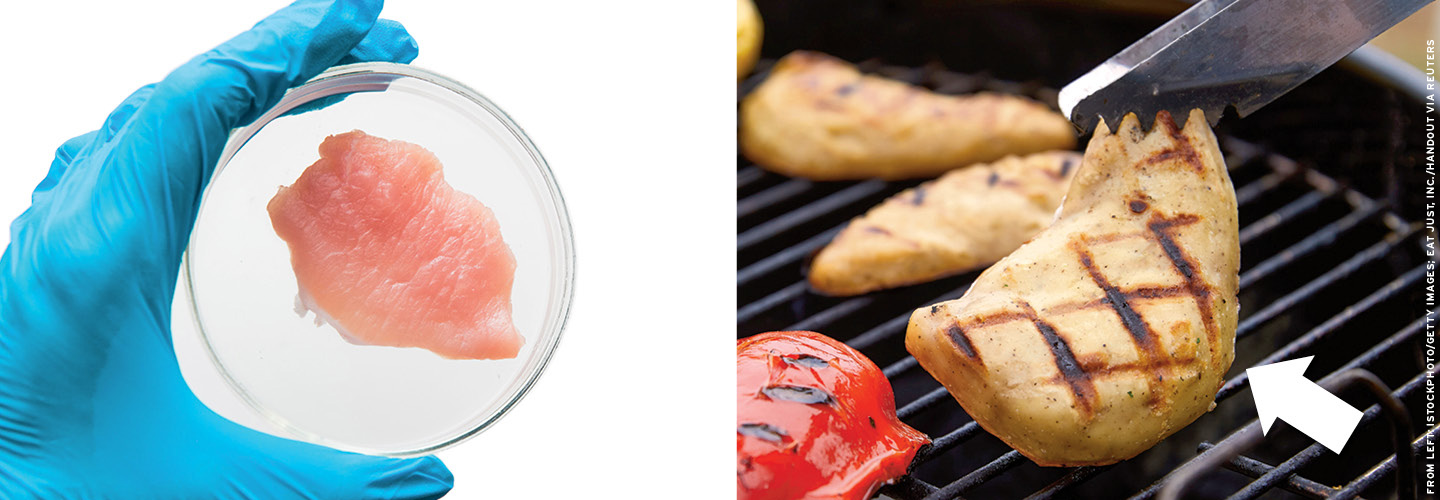Diners were recently chowing down on crispy chicken and waffles and chicken bao, a traditional Chinese dish, at a restaurant in Singapore. But there was something different about this meal: The meat didn’t come from chickens on a farm. In fact, it was never part of a living, breathing organism—at least not in the way we usually think about these things. Instead, it was created in petri dishes in a lab.
It may sound like science fiction, but meat made from animal cells—called cultured meat or lab-grown meat—may soon be headed to your plate. In October, the San Francisco-based start-up Eat Just became the first company in the world to gain approval to sell a lab-grown meat product to customers. The approval came from the city-state of Singapore—where two months later, the restaurant 1880 became the first ever to serve lab-grown meat, in the form of chicken nuggets.
So far, Singapore is the only place to have approved a lab-grown meat product for sale, but cultured meat has been under review by the U.S. Food and Drug Administration and the Department of Agriculture for the past two years. And experts say it might not be long before Americans begin seeing lab-grown meat in supermarkets and restaurants.
“This is huge,” Chase Purdy, author of Billion Dollar Burger, a book on the lab-grown meat industry, says about the approval in Singapore. “It takes these moments where something goes from being science fiction to a possibility for us to actually begin the hard work of truly thinking, ‘OK, what does this technology mean?’”
Diners were recently chowing down at a restaurant in Singapore. They ate crispy chicken and waffles and chicken bao, a traditional Chinese dish. But there was something different about this meal: The meat didn’t come from chickens on a farm. In fact, it was never part of what we consider a living, breathing organism. Instead, it was created in petri dishes in a lab.
It may sound like science fiction, but meat made from animal cells may soon be headed to your plate. It’s called cultured meat or lab-grown meat. In October, a San Francisco-based start-up called Eat Just became the first company in the world to gain approval to sell a lab-grown meat product to customers. The approval came from the city-state of Singapore. Two months later, a restaurant there named 1880 became the first ever to serve lab-grown meat. The dish was served up in the form of chicken nuggets.
So far, Singapore is the only place to have approved a lab-grown meat product for sale. But cultured meat has been under review by the U.S. Food and Drug Administration and the Department of Agriculture for the past two years. And experts say it might not be long before Americans begin seeing lab-grown meat in supermarkets and restaurants.
“This is huge,” Chase Purdy, author of Billion Dollar Burger, a book on the lab-grown meat industry, says about the approval in Singapore. “It takes these moments where something goes from being science fiction to a possibility for us to actually begin the hard work of truly thinking, ‘OK, what does this technology mean?’”

